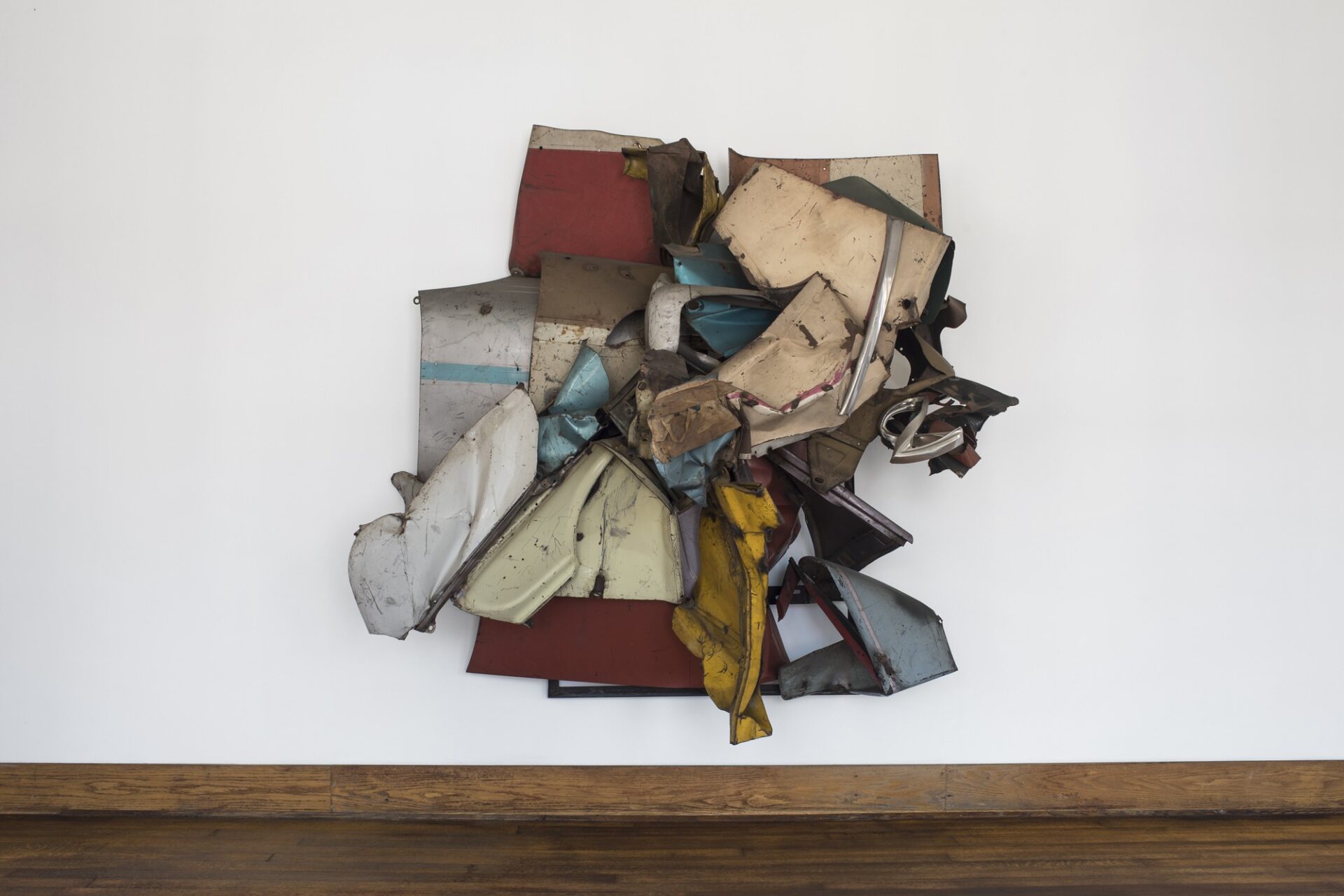In a 1972 interview with Barbara Rose, Donald Judd noted that he “first started seeing a lot of John [Chamberlain]’s work almost at the time I was doing my own first three-dimensional work. I hadn’t seen much prior to that. . . . The volume of John’s work and that idea of volume was important to me. So that was an influence, and I learned something from that. That was the main thing, I think—the volume was really the essential thing.”1
Shortstop, 1957, marked John Chamberlain’s shift from the exclusive use of steel rods to the use of automobile body parts, of which Mr. Press is also primarily comprised. To create Shortstop, Chamberlain used two fenders that he found at Larry Rivers’s property on Long Island and wrapped them with iron rods. As Chamberlain recounted in the 1980s:
I wasn’t interested in the car parts per se, I was interested in either the color or the shape or the amount. I didn’t want engine parts, I didn’t want wheels, upholstery, glass, oil, tires, rubber, lining, what somebody’d left in the car when they dumped it, dashboards, steering wheels, shafts, rear ends, muffler systems, transmissions, fly wheels, none of that. Just the sheet metal. It already had a coat of paint on it, and some of it was formed. You choose the material at a time when that’s the material you want to use, and then you develop your processes so when you put things together it gives you a sense of satisfaction.2
Judd’s earliest writing on Chamberlain’s work was a review of the sculptor’s third solo exhibition at the Martha Jackson Gallery in January 1960, published in the February issue of Arts Magazine. He also wrote a favorable review of Chamberlain’s solo show at Leo Castelli Gallery in 1962: “Chamberlain is the only sculptor really using color, the full range, not just metallic shades; his color is as particular, complex and structural as any good painter’s.”3 In “Chamberlain: Another View,” published in Art International the following year, Judd wrote, “The sculpture is redundant. There is more metal and space than the sculpture requires. This voluminousness is a salient aspect of the work. This idea is Chamberlain’s alone.”4 In 1983, through Judd’s initiative, the largest permanent installation of works by Chamberlain in the world opened at the Art Museum of the Pecos, now the Chinati Foundation, in Marfa, Texas.
